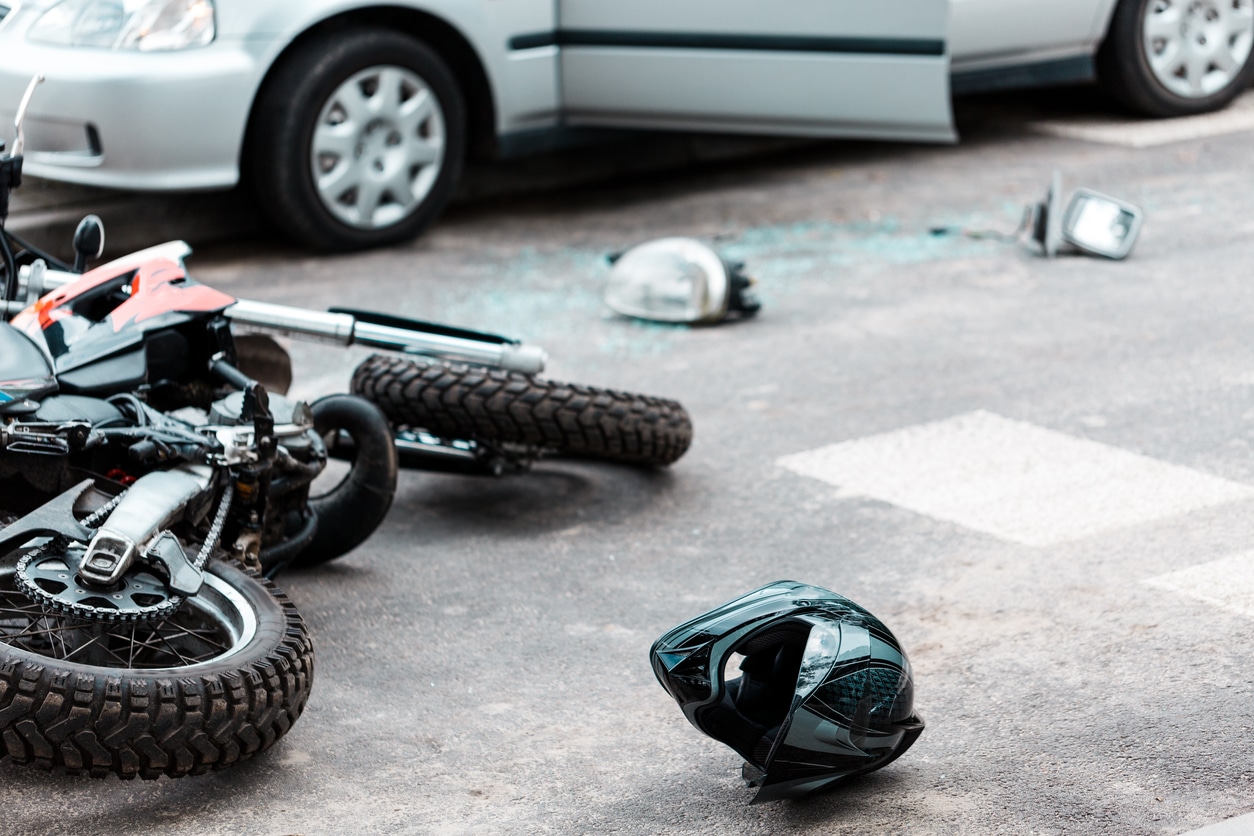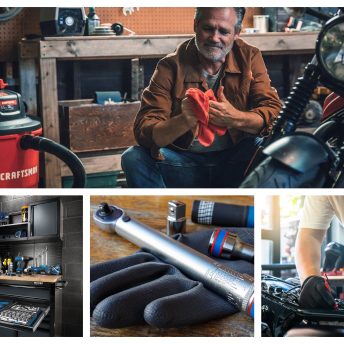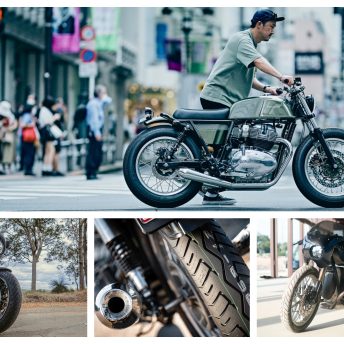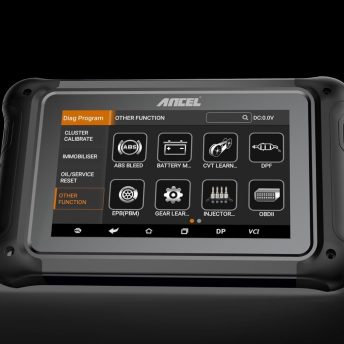Statistically, most motorcycle accidents that involve other vehicles are caused by a car turning into the motorcyclist’s path. For motorcyclists, there’s nothing worse than hitting a car this way. The results can be devastating, with many of these accidents proving fatal.
Serious injuries are common, but if you’re lucky to walk away from an accident like this, the next step on your journey will be working with the authorities to try and accurately determine who is liable for the damage caused.
Generally speaking, there are a number of situations where a motorcycle may be considered entirely blameless. If a car turns across a rider’s path into another street without due care and attention; if a vehicle pulls out of a street or driveway into the direct path of a motorcycle, without paying attention; if a car performs a u-turn or similar maneuver without taking care that the road is clear; and if a vehicle suddenly changes lane position without warning as a rider is mid-way through an overtaking maneuver.
Left-turn collisions are arguably the most common type of accident. These accidents largely occur at intersections, with cars failing to yield the right of way resulting in a t-bone collision. As vehicles approach these intersections, the law stipulates that drivers must signal their intentions at least 100 feet before beginning their maneuver, waiting that the way is clear before engaging. Any vehicle waiting to make a turn must yield to any traveling in a straight line. Most t-bone accidents are caused by one vehicle failing to yield and disrupting the natural flow of traffic.
On paper, it would appear that most t-bone collisions are and open and shut case. Unfortunately, no two accidents are the same, and there are many factors that investigators will need to take into account to determine which party is liable.
If you’re worried about t-boning a car or have recently been involved in a similar accident, here’s what you need to know.
What do riders need to know if they T-bone someone turning?
No one wants to be involved in a traffic collision, however, if the unthinkable happens it’s a wise idea to get started collecting information as soon as possible. Proving that you were not at fault isn’t as easy as you’d think, and the more evidence that you can gather to support your claim will help any insurance or compensation claim, the better.
You will need to prove that the driver that hit you wasn’t driving with due care and attention, causing the accident. The most popular way to prove this is with any camera footage that you can find. This could be from an action camera, dashcam footage from nearby vehicles, or CCTV. Eye-witness reports are also very useful, so try and get the details of any witnesses. Be warned—proving that the driver caused the accident may not be enough to convince a court.
The offending driver may be able to defend their position, arguing that you were speeding, or riding recklessly. If it turns out that you weren’t riding within the boundaries of the law, it will likely harm your claim. So always be sure that you’re riding legally at all times!
If everything was legal and above board, the police report should be written in your favor, allowing you to be exempt from all liability. Not all cases are equal though, and in situations like this, it’s generally a wise idea to consult a legal professional.
What about if a pedestrian jumps out on the road?
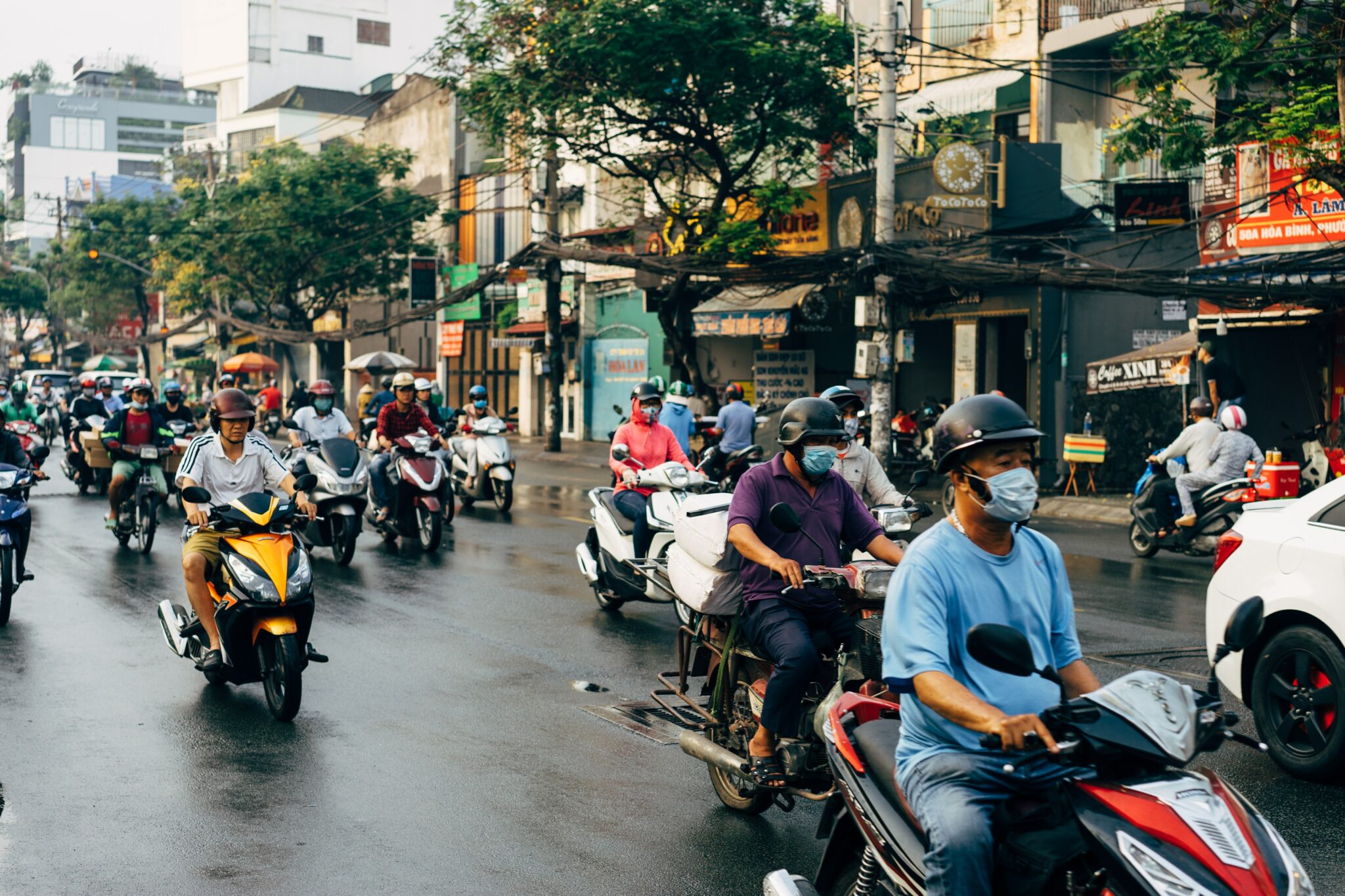
While it’s not a t-bone situation, another question that we’re often asked is who is liable if a pedestrian jumps out into the road. It certainly is an unusual situation, but if we replace the word “jump” with “blindly walks out” it’s a more relatable scenario—especially in the era of “smart” technology.
Most pedestrians aren’t in the business of walking into the path of a fast-moving object, but accidents do happen. In many situations, logic would generally dictate that the driver (or rider in this case) would be liable in the event of an accident, but that’s not always the case.
If it can be proven that the pedestrian made a move that was impossible for a rider or driver to avoid, then the liability should fall on the pedestrian. But only if the motorcyclist was riding in a reasonable manner. Providing that they were traveling within the speed limit when a pedestrian appears directly in their path, the motorcyclist will likely not be held responsible. In some situations, even if the rider was traveling over the speed limit, it could still be argued that the pedestrian would be at fault, providing that the accident could not be avoided.
Other situations, such as pedestrian walking in a dangerous manner (at night, without a light or high-vis clothing) along a fast-moving road, could also find the pedestrian at fault if their presence or actions causes an accident.
There are situations where both the motorcyclist and car driver may share the liability. It may be judged that both parties were at fault for their actions and at different degrees.
What happens if they get into an accident and their bike continues to slide/cause further damage?
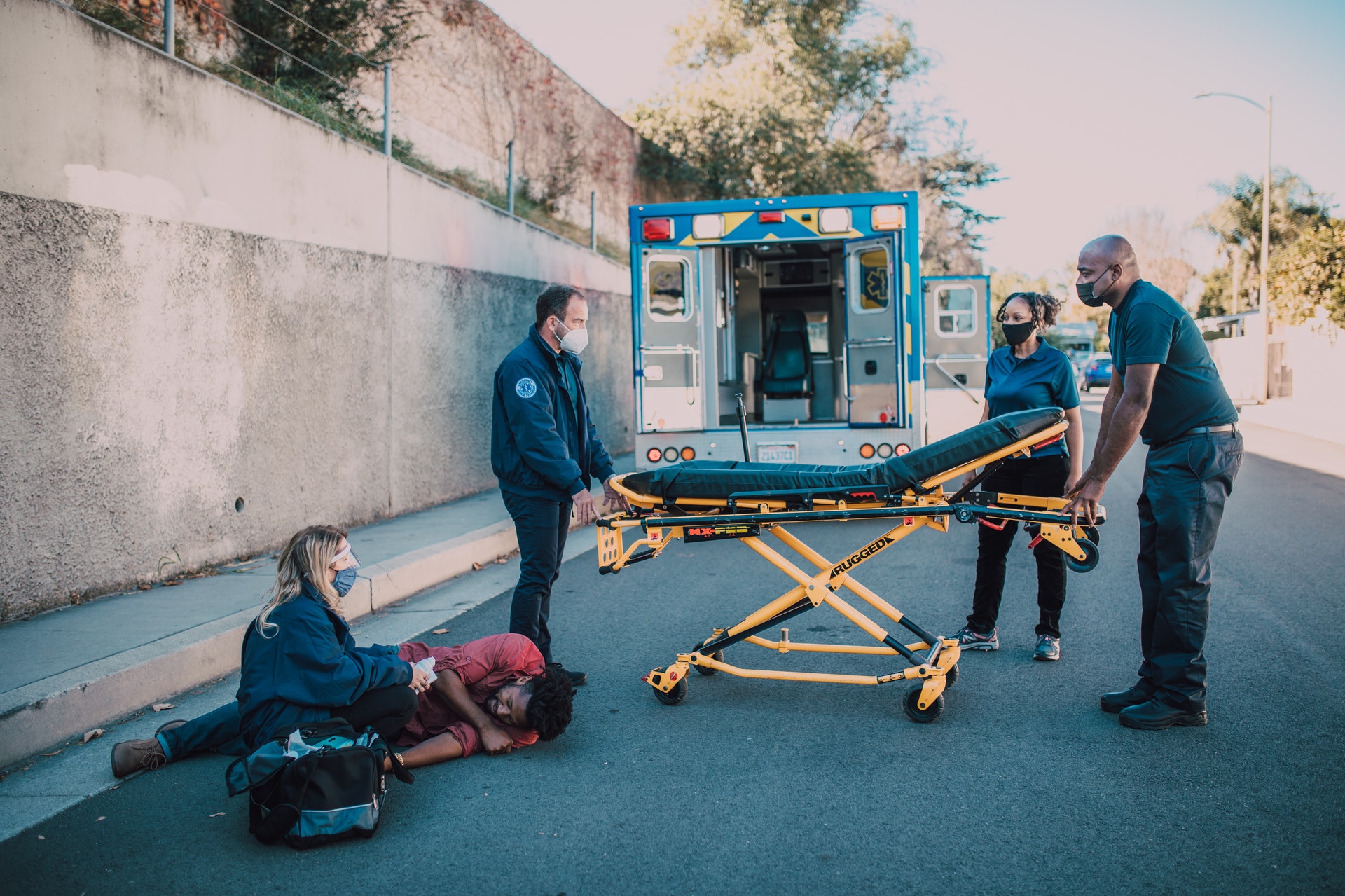
Determining the liable party in this unusual situation can be tricky. A sliding motorcycle will be sliding across a road for a reason. To understand who is liable for any damage it causes, it’s necessary to understand who is responsible for it sliding across the road in the first place.
In the event of a collision, if it was deemed that a car driver caused the accident, setting the events in motion that caused your motorcycle to slide across the road, then the driver will be held responsible for the situation.
There are also times when a car may simply cause a motorcycle to crash, without there being a collision between the two vehicles at all. A driver’s negligence may cause a motorcycle to crash independently, with the resulting slide causing damage. If it can be proven that the situation was caused by the negligence of the car driver, then the liability will fall on them, even if the car was not directly involved in a physical accident.
It should be noted that most single-vehicle motorcycle accidents are caused by rider error. Findings from the Hurt Report determined that around two-thirds of all incidents of this type were down to rider error. These situations are most commonly caused by grabbing a handful of front brake in error, rider fixation causing steering issues, and incorrect cornering lines. All of these can cause a rider to lose control of their bike, causing damage without the involvement of another party. In these situations, the motorcyclist is open to liability.
There are occurrences when manufacturing defects could cause a single-party accident or put riders into situations where otherwise avoidable accidents occur, but these are very rare scenarios.
What can riders do to protect themselves from liability?
Protecting yourself from liability in the event of an accident should be straightforward, providing that you’re riding within the limits of the law, with respect to other road users, and in a safe and considerate manner. However, it’s not always as simple as that. To help guarantee that the law is on your side, it’s important that you take a few extra precautions.
Ride with an action camera that records everything. If you are well and truly riding within the law, video evidence will prove that. A good action camera could provide crucial evidence.
Consider extra training. While extra training won’t help if you’re in an accident, it will look favorable to a court. If you take your riding seriously and have taken the extra measures to improve your technique, you’ll have a stronger legal stance.
Make yourself visible. Riding wearing high-viz gear will make it harder for any driver to claim that they couldn’t see you. Even with the right gear, it’s important to ride assuming that other road users can’t see you.
Follow the rules. Naturally, the best way to avoid liability is to ensure that you’re following the rules. That means slowing at a yellow light, stopping at a red, and obeying all traffic signs.
Consult a professional. In the aftermath of an accident, it’s always wise to consult a legal professional. An experienced personal injury law firm specializing in automotive cases will be able to accurately present your case to a court or defend you against any legal challenge.
Lastly: while it won’t help you protect yourself from liability, wearing appropriate protective riding gear can protect your body from serious injury or death in the event of an accident. It’s all very well discussing liability, but whether you’re in the right or in the wrong means little if you aren’t around to enjoy the rest of your life. Wear the right gear so that you can walk away from an accident, and tell your side of the story.
